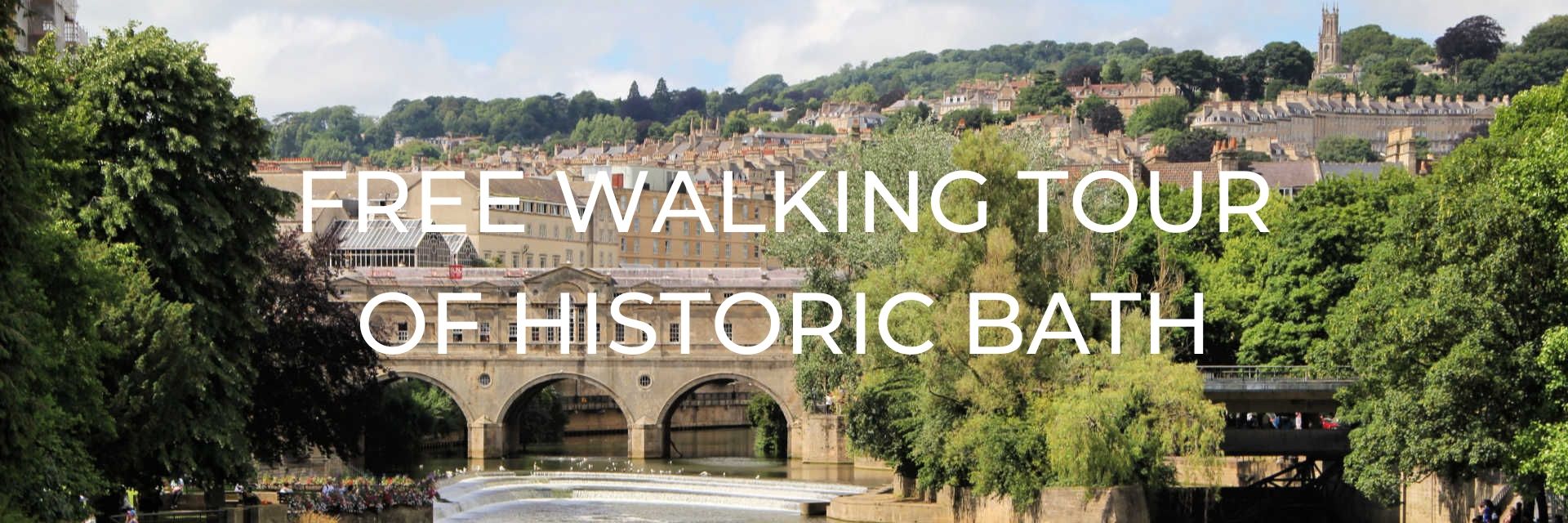
There is no better way to get a feel for the layout of Bath and a huge wealth of interesting information about the city than the Mayor of Bath’s Corps of Honorary Guides Free Walking Tour. Leaving from the courtyard outside the Roman Baths every day of the year except Christmas Day, these two-hour tours are interesting, well-paced and a must-do for any visitor to Bath.
Want to save this for later? Click the Pinterest button on the left for a pinnable image!
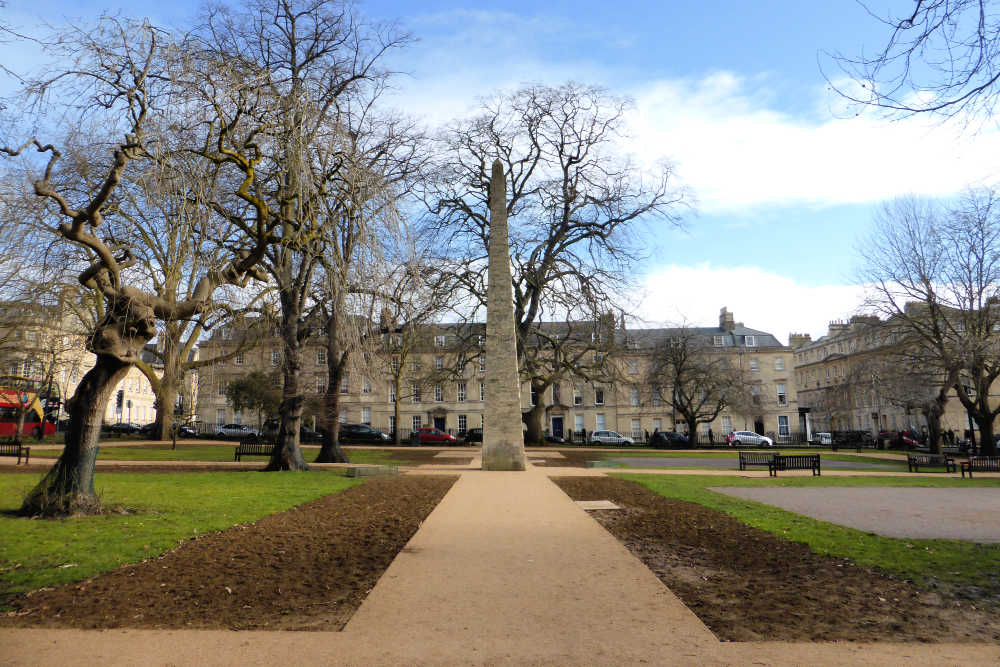
This post may contain affiliate links. Please read our full disclosure policy here.
Founded in 1934, the Mayor of Bath’s Corps of Honorary Guides have been showing visitors around just about every day since – even during the period of the Second World War. By 1960 new volunteer guides started attending formal training sessions and local experts gave lectures on many subjects about the city.
By 1975 the frequency of the walks grew to twice daily and on every day of the year except Christmas day. As far as anyone can remember the walks have only been cancelled twice – in 1981 when the ground was too icy and dangerous to walk on, and in 1996 when hurricane-force winds blew through the city uprooting trees. These guides are committed!
Today there are about 65 guides who volunteer their time to lead the walks and give visitors a very interesting history lesson of Bath. The walks are totally free, as in the guides will not even accept tips, but don’t let that deter you lest you think that free doesn’t equate to well done. When they say ‘some of the best things in life are free’…these walks are one of those things.
READ MORE: Weekend Guide to Bath: 48-Hour Itinerary
HIGHLIGHTS OF THE FREE WALKING TOUR OF BATH
There are always a number of guides on duty, so don’t despair if a large crowd is gathered. Each guide will take a portion of the crowd and they each follow a different route around the city. This means that you don’t keep bumping into the other groups outside attractions. It also means that it is likely that your tour won’t be in the same order as we saw the highlights below.
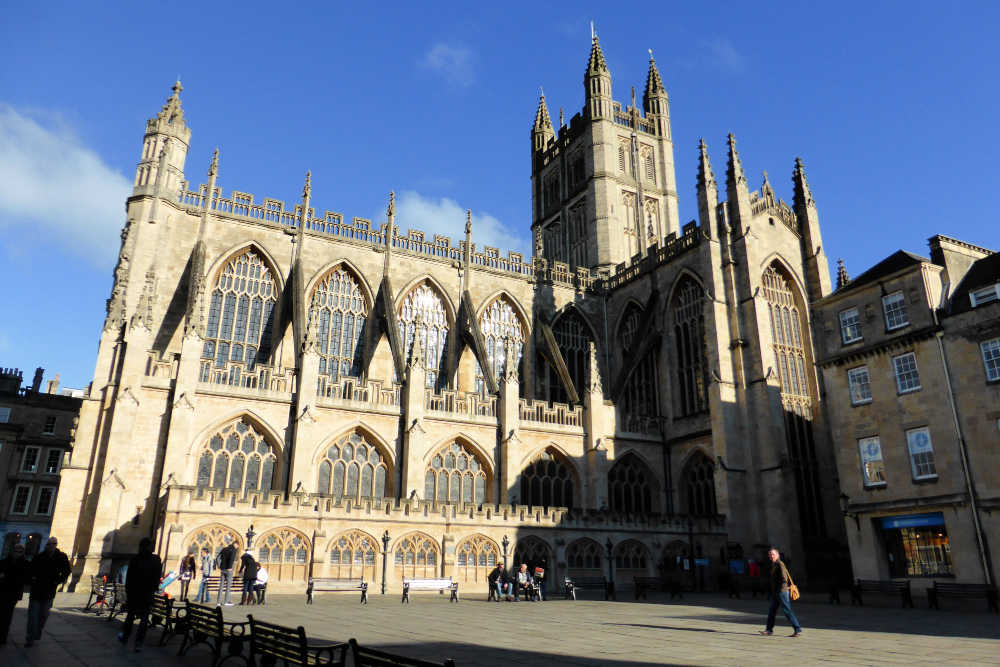
BATH ABBEY
Since the year 757 a church has stood on the site of the Bath Abbey and in 973 the first King of England, King Edgar was crowned here. Today the beautiful medieval Abbey Church of Saint Peter and Saint Paul, or commonly referred to as Bath Abbey, is a central landmark in the city of Bath. Its tall Gothic spires can be seen from much of the city and its exterior yellowish colour is from the Bath stone with which it was built.
Our guide also pointed out a couple of details like the statues of St Peter and St Paul, one of whom lost his head and shoulders, but they’ve since been restored. Another interesting detail is of the sculptures of the angels climbing to heaven on two stone ladders, although one angel is seen climbing back down representing a “descent through the vice of pride”.
Inside you’ll find seating for 1200 under the spectacular vaulted ceilings, and if you climb the 212 steps up to the top of the tower you’re rewarded with a great view of the city.
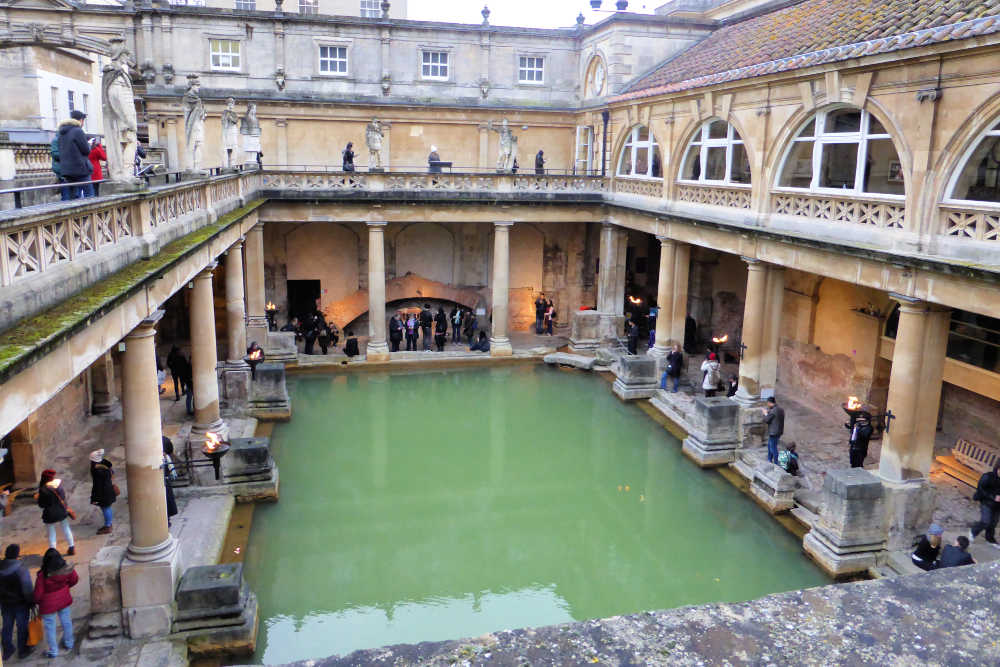
ROMAN BATHS
Around the Roman Baths our guide started telling us more about how Bath came to be founded way back about 2,500 years ago when the hot springs were discovered and it became a place of worship to the Celtic god Sul. Originally called Aquae Sulis, the town became known as Bath after the Romans moved in and created the firsts baths and temple buildings around the Sacred Spring in 76 A.D.
Water temperatures in the Sacred Spring reach 46° C (114°F) and it was here that the spirit of the goddess Sulis Minerva dwelt and was worshipped. The local people also wrote curses about other people, for things like theft, on lead or pewter and threw these in to the Sacred Spring to the goddess for her intervention with the thieves.
READ MORE: Guide to Visiting The Roman Baths
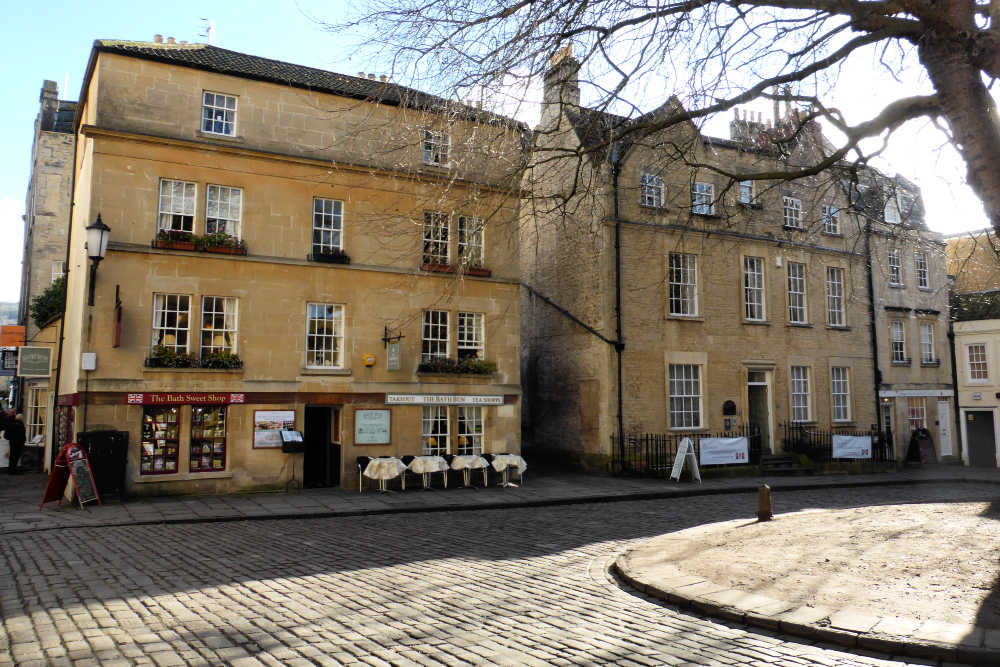
BACK STREETS
Continuing through the cobblestone streets we made our way around to the Thermae Bath Spa, just one of many spas in Bath over the centuries. This particular spa even has a pool, fed by the hot springs, up on the roof with great views of Bath.
Close to the baths, you’ll also find the St. John’s Hospital that was founded around 1174 and is among the oldest almshouses in England. The current building isn’t quite that old, being built in 1716. It was the “hospital of the baths” and provided shelter and care for the poor who had come to experience the healing properties of the baths. The courtyard is absolutely lovely, it was so serene and it is a pleasant spot to stop on a busy afternoon for a little rest from the crowds on the streets of Bath.
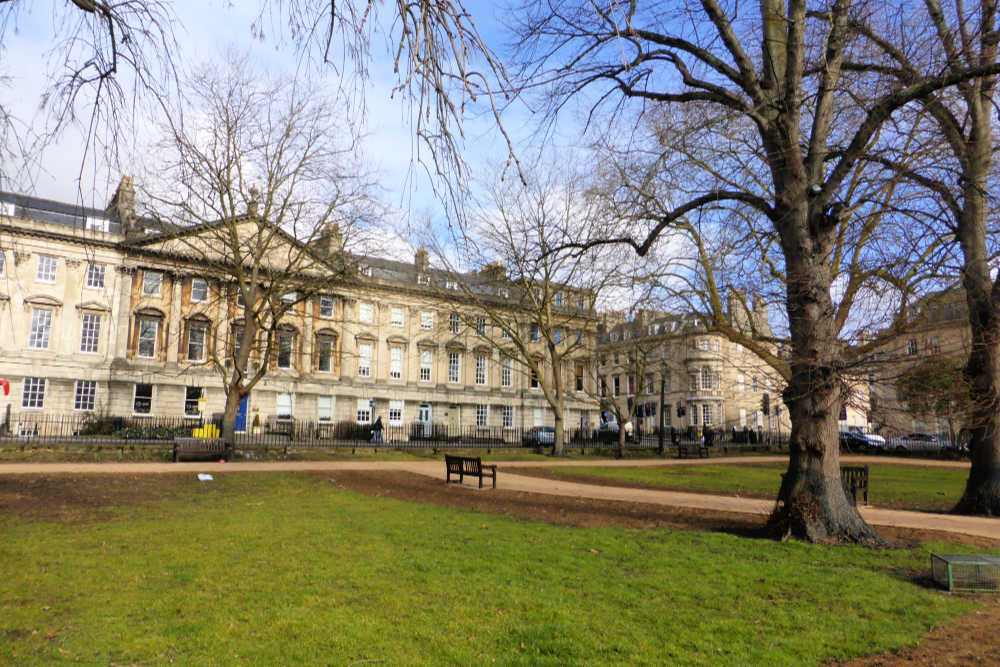
QUEEN SQUARE
From here we started making our way a little uphill along what was once the path of one of the city walls to Queen Square. This square is surrounded by Georgian style houses and is said to be the “first element in the most important architecture sequence in Bath” which also includes the Circus and the Royal Crescent.
It was about here that we were also given more insight into one of three important men in the history of Bath that we learned a lot about on our tour – John Wood the Elder. He was the architect behind Queen Square when he set out to restore Bath to its former glory in 1725. Queen Square was named in honour of Queen Caroline, the wife of George II, and was designed to look like a palace with wings and a forecourt for people to gather together. He knew that people of the high society enjoyed parading so as he further developed the city he provided wide streets with raised sidewalks. If ever you wanted to see and be seen, Bath was just the place to do it.
The obelisk in the centre of the square was erected by the second man we learned a lot about – Beau Nash. In 1738, when it was created in honour of Frederick, Prince of Wales, it stood in a circular pool climbing 70 feet (21 m) high. Unfortunately, a severe wind in 1815 shortened it. Other damages to the square came during WWII as part of the Bath Blitz when a 500 kg bomb landed on the east side of the Square and damaged most of the buildings. Although the buildings have been restored, there are still some signs of the bombings.
READ MORE: Looking for more great things to see and do when you visit Bath? Check out these 21 things to do in Bath!
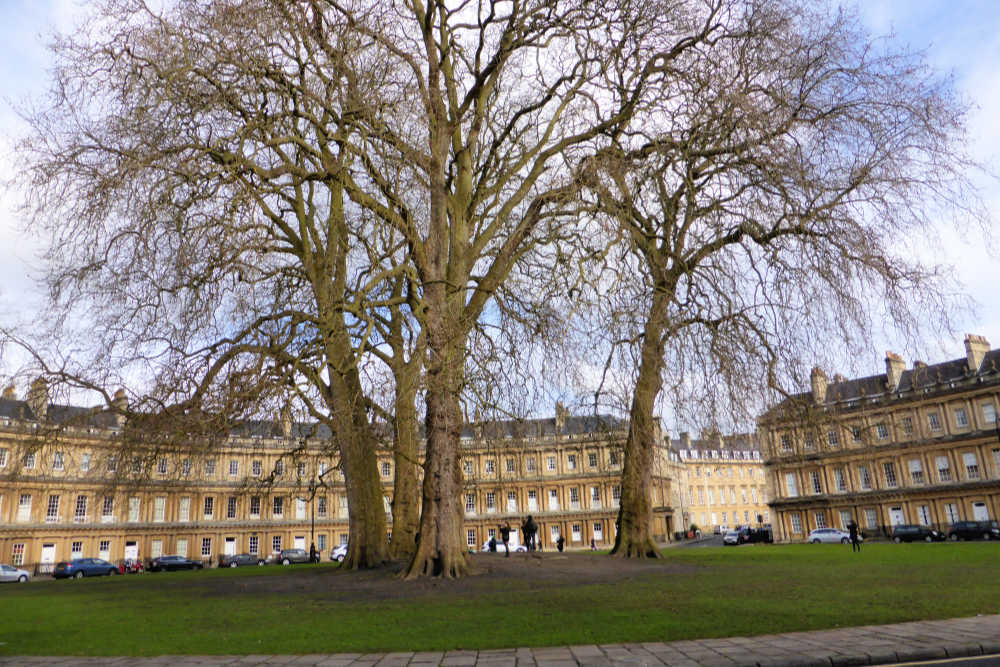
THE CIRCUS
The Circus, formerly known as the King’s Circus, was built between 1754 and 1768 and was our next stop along our walk. Another example of Georgian architecture, it is divided into three segments of townhouses of equal lengths. Each of the segments faces an entrance so no matter where a visitor enters from they always face one of the beautiful facades.
The Circus was designed by John Wood the Elder, but he didn’t live to see his design finished as he died only three months into construction. It is here that we were told more about the life of John Wood the Younger, as he was entrusted to take over the construction in his father’s absence.
The inspiration for the Circus came from the Colosseum in Rome but was built facing inward, instead of outward like the Colosseum. Three classical styles were used for the curved facades of each floor- Greek Doric, Roman, and Corinthian. Also included in the details are alternating triglyphs and 525 pictorial emblems that include serpents, nautical symbols and representations of the arts and sciences. And all along the top, the parapet is decorated with stone acorn finials.
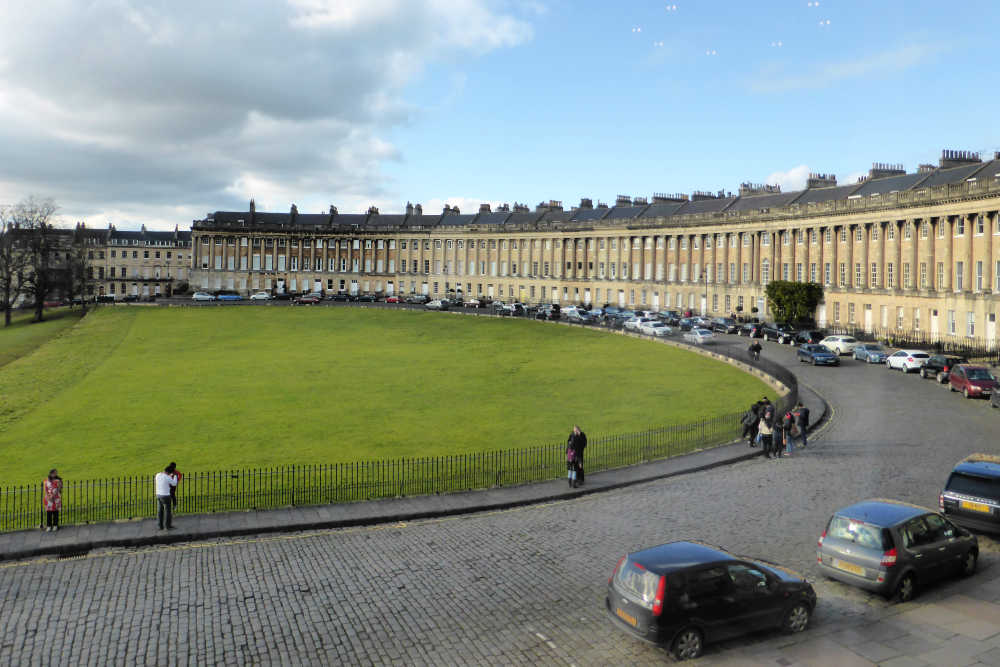
THE ROYAL CRESCENT
From here we walked around to likely one of the most recognized buildings in all of Bath – the Royal Crescent. Designed by both John Wood the Elder and his son, John Wood the Younger, it is considered an outstanding example of the architecture of the period. The crescent has remained almost unchanged since it was built between 1767 and 1775 as a long, semi-circular collection of 30 fine homes.
Today one of the houses is a hotel, another is a museum (No 1 Royal Crescent), the rest are still private homes, and the whole building has been used as a backdrop for many films and television programs set in the Georgian time period. No doubt you’ve seen it at some point, even if you didn’t realize that was the building in the background. You can take a tour of the museum which is decorated and furnished for the time period.
READ MORE: Guide to Visiting No 1 Royal Crescent
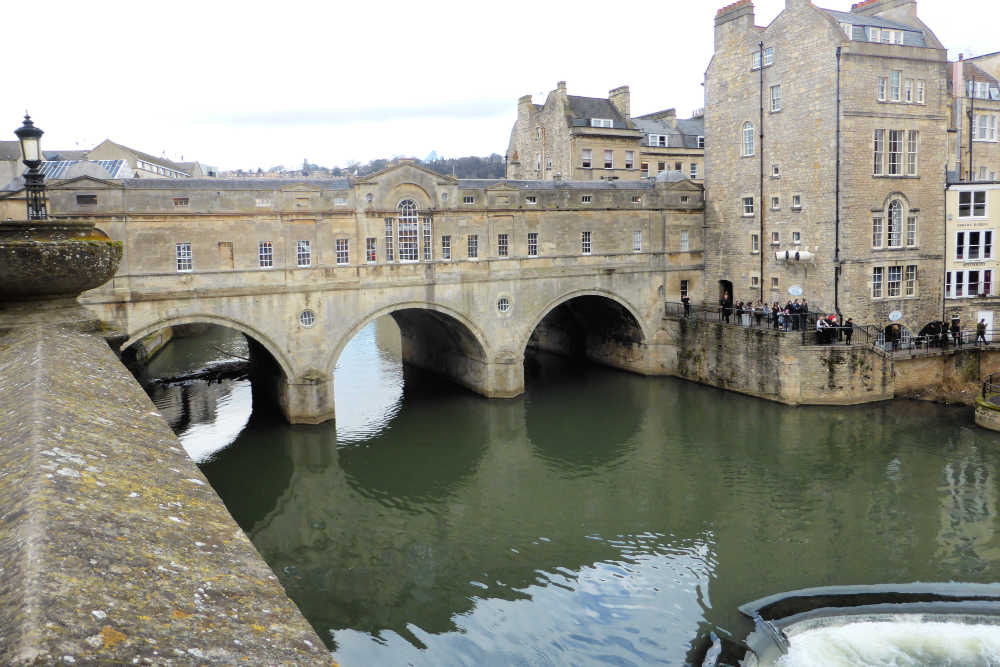
MILSOM PLACE AND PULTENEY BRIDGE
By this time it was getting on time to start making our way back down into the centre of Bath to wrap up the tour. We followed our guide along the busy shopping area of the Milsom Quarter and down Milsom Place. There are oodles of great shops along this street but I was really more interested in looking up at the remnants of the signs that were painted directly on the buildings in days gone by.
Here we were shown the remnants of the original East Gate of the defensive city wall that was built around Bath. The first walls were built by the Romans and then the Anglo-Saxons constructed a fortification at Bath, using the existing city walls to help maintain the city as the centre of regional power. The original North and South Gates were both decorated with statues of kings but they were destroyed in 1755. Today only the East Gate remains along with a bit of the wall.
Our final stop found us back behind Bath Abbey alongside the river with a view of Pulteney Bridge. Built to resemble the Ponte Vecchio in Florence, the Pulteney Bridge was built to cross the River Avon in the 18th century. It is one of only four bridges in the world to have shops built into its original design.
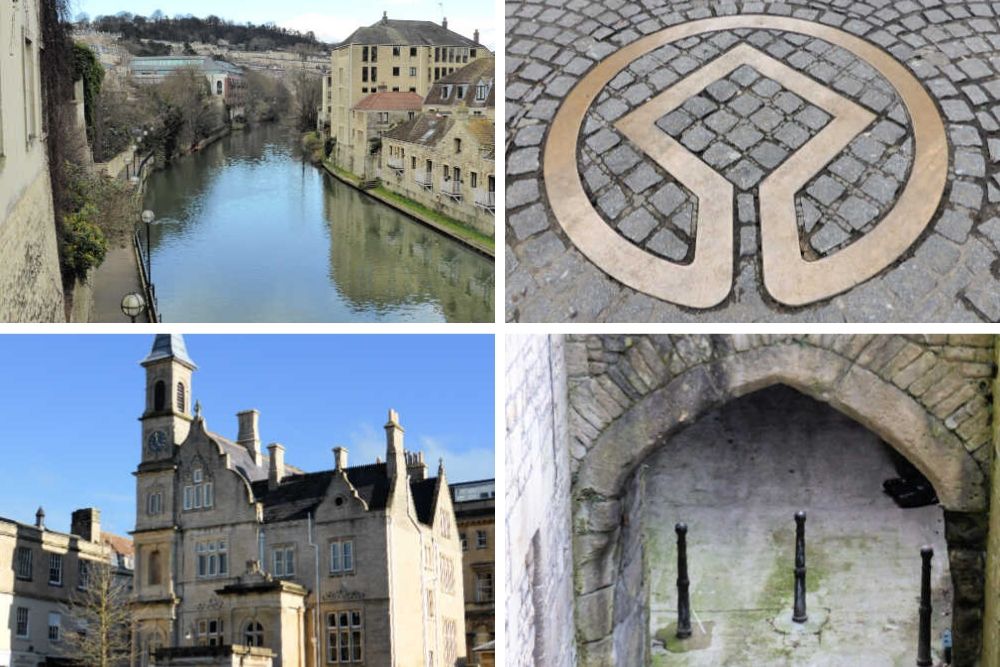
INFORMATION ABOUT THE FREE WALKING TOUR OF BATH
Information last updated December 2019
HOW TO GET THERE
The Mayor of Bath’s Corps of Honorary Guides Free Walking Tour of Bath starts outside the Roman Baths at Abbey Churchyard Bath BA1 1QL.
The nearest station is Bath Spa (Great Western Mainline) which is less than 10-minutes walk away. You can catch a bus (3, D1 discover or D3 discover) from the bus station outside Bath Spa to Guidhall which is just 1-minutes walk from the starting point of the free walking tour.
Parking is available five-minutes walk away at Manvers Street Car Park. Parking is £1.60 per hour, with a minimum stay of two hours, up to £15 for 12 hours.
HELPFUL LINK:
- If you need an app that will navigate you around whether walking, driving or using public transport and even works offline then click for a guide about how to use Here WeGo.
OPENING HOURS
The tours are offered Sunday to Friday at 1030 and 1400 pm, Saturday at 1030 am only and 1900 pm on Tuesdays and Thursdays from May to September. They take about two hours and cover a distance of about two miles.
As all of the tour is outside, you may wish to avoid attending if the weather is bad. However the tours will go ahead, they don’t cancel unless the weather is anything below life-threatening!
HOW TO BUY TICKETS
There is no need to purchase tickets unless you are a group of 12 or more. Simply congregate at the start point of the tours in good time and the guides will split you into groups and start the tour.
For groups of 12 or more, you should book a tour four weeks in advance directly with the Mayor’s Guides. For groups of 12 or more, themed walks are available, group walks are generally not offered at the weekend.
ACCESSIBILITY
The walks take place on public streets and are therefore accessible. Guides will adjust the route to avoid steps when groups include wheelchair users. Please note, guides cannot assist with moving wheelchairs.
For additional accessibility details please see the bottom of the When & Where page on their website.
IS THE FREE WALKING TOUR OF BATH WORTH DOING?
This walking tour provided an awesome overview of the City of Bath, its historical buildings, and the stories of some of the people that helped shape its history and make it what it is today. We really encourage anyone who visits Bath to join one of the tours, you will definitely learn a lot more than what we were able to share today. This is really just the smallest tip of the iceberg of the fascinating tales you’ll hear from your guide.
It’s a really nice leisurely stroll through Bath. You could almost pretend you are one of the high society out “parading”.
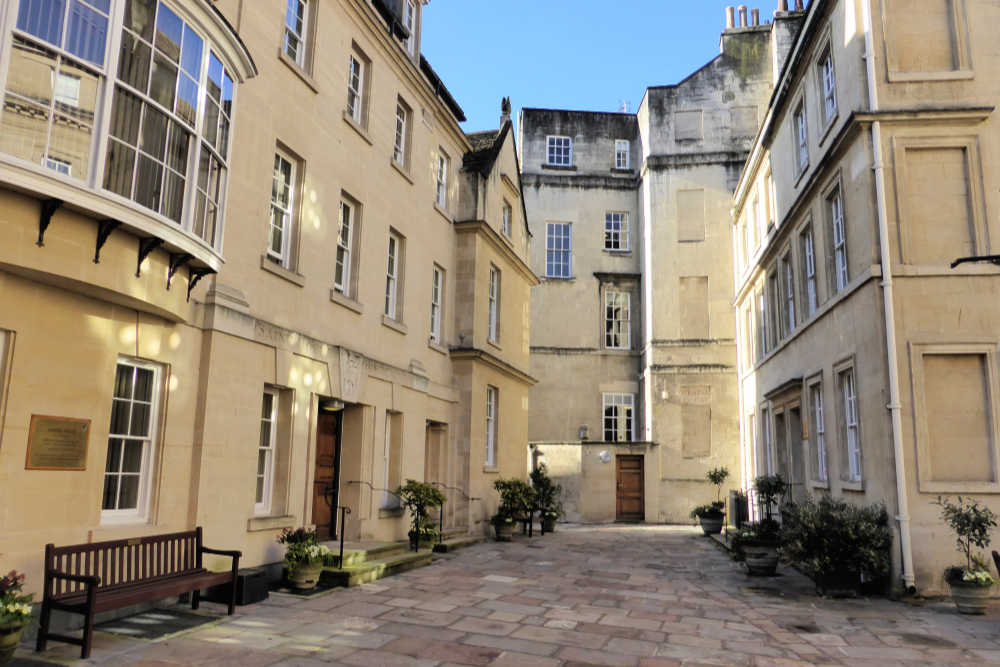
ADD TO YOUR BATH ITINERARY
Bath is most famous for the Roman Baths that the town is named for; heated from a natural spring with purported healing properties. The entire city was inscribed on the UNESCO World Heritage List in 1987 for its Roman remains and classic Georgian architecture. Visitors today can explore this compact elegant city and its many attractions.
- Experience how Bath’s residents would have lived in the late 18th Century with a visit to No 1 Royal Crescent.
- With its stone depiction of Jacob’s Ladder on the west front, Bath Abbey is one of the most famous and beautiful things to see in Bath.
- The reason Bath is called Bath, the well-preserved Roman Baths are a must-see for visitors. Explore the baths and take a taste of the spa water which contains 43 different minerals.
- For a modern take on a Roman Bath, visit the Thermae Baths with their open-air rooftop pool filled and heated with the natural spring water the Romans would have used.
- Walk across the much-photographed Pulteney Bridge, though you won’t know you are on a bridge, as it has shops on both sides across the whole width of the bridge!
Want to save this for later? Click the Pinterest button on the left for a pinnable image!
RESOURCES | PLAN YOUR TRIP TO BATH
To book flights, rental cars, accommodations, and activities for your trip, please check out our recommended travel providers, favourite apps and websites.
Some of the links in the post above are affiliate links. This means if you click on the link and purchase the item, we will receive an affiliate commission but this does not affect the price to you. Please read our full disclosure policy here.
